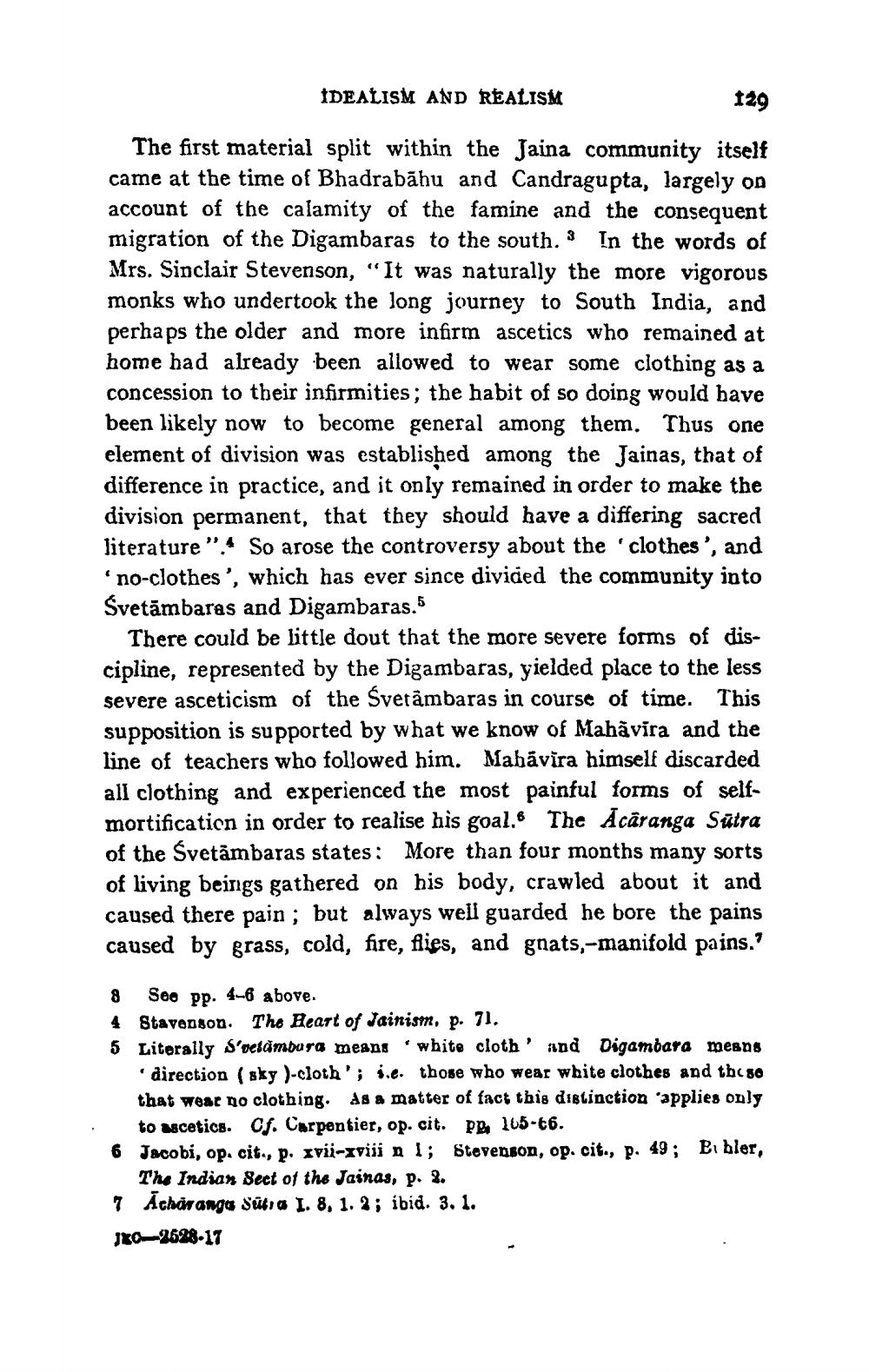________________
IDEALISM AND REALISM
129
The first material split within the Jaina community itself came at the time of Bhadrabāhu and Candragupta, largely on account of the calamity of the famine and the consequent migration of the Digambaras to the south. 3 In the words of Mrs. Sinclair Stevenson, “It was naturally the more vigorous monks who undertook the long journey to South India, and perhaps the older and more infirm ascetics who remained at home had already been allowed to wear some clothing as a concession to their infirmities; the habit of so doing would have been likely now to become general among them. Thus one element of division was established among the Jainas, that of difference in practice, and it only remained in order to make the division permanent, that they should have a differing sacred literature". So arose the controversy about the 'clothes', and 'no-clothes', which has ever since diyiced the community into Svetāmbaras and Digambaras.5
There could be little dout that the more severe forms of discipline, represented by the Digambaras, yielded place to the less severe asceticism of the Svetämbaras in course of time. This supposition is supported by what we know of Mahavira and the line of teachers who followed him. Mahāvīra himself discarded all clothing and experienced the most painful forms of selfmortification in order to realise his goal. The Ācāranga Sūtra of the Svetāmbaras states: More than four months many sorts of living beings gathered on his body, crawled about it and caused there pain ; but always well guarded he bore the pains caused by grass, cold, fire, flies, and gnats,-manifold pains.?
8 See pp. 4-6 above. 4 Stavenson. The Heart of Jainism, p. 71. 5 Literally S'oetambura means 'white cloth' and Digambara means
direction (sky )-cloth'; s.e. those who wear white clothes and tbc 80 that weat no clothing. As a matter of fact this distinction 'applies only
to ascetics. Cf. Carpentier, op. cit. PP. 105-06. 6 Jacobi, op. cit., p. xvii-xviii l; Stevenson, op. cit., p. 49; Bibler,
The Indian Sect of the Jainas, p. 2. 7 Achárange Sütia I. 8, 1. 2; ibid. 3. 1. JRC-2628-17




